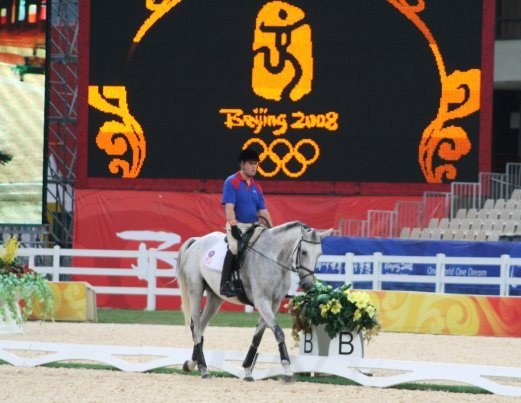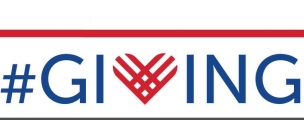
Keith and his horse Lumberjack in Athens
As the Olympians settle in back home and the Paralympians take their turn in Rio, I take this opportunity to reflect on my nine years as a member of Team USA, and specifically the two Paralympics I was fortunate enough to attend. Many of you know me as the Community Programs Coordinator here at Magee, but years ago I lived a whole different lifestyle. I was a member of the US Para-Equestrian team and that experience ended up taking me around the world.
I was introduced to horses as a form of therapy at age four. Fast forward 15 years later to 2002 and I was on my first national team. Two years after that, I became the youngest person at the time to ever make the U.S. Paralympic Equestrian team at the age of 21. Riding, training, and competing was a lifestyle that both my horse and I shared, and together we collected our fair share of frequent flyer miles, too. (Yes, you can fly a horse, and my teammates and I often did). I flew one horse named Jack to Athens in 2004, and one named Danny to Beijing in 2008.
So what are the Paralympic and Olympic Games like for competitors? There are two types of people at the games: those who are there to win, and those who are just happy to be there. For most of us, myself included, it’s an emotional and mental roller coaster with extreme highs and lows. Here’s an example. You make the team, and by doing so, a lifelong dream comes true: extreme high. You get to the games, and after competing, you are in third place, about to be on the podium receiving a bronze medal… only to get beaten by one of the final riders of the day to end up finishing fourth by .03% of a point. Extreme low.
The fact is: there is only one gold medalist and only three medals total for each event. Do the math, and you can quickly realize that the majority of people participating in the Games will not receive a medal, and they will likely feel the same disappointment that I did. Most people don’t get as close as I was. It was like going to a Michelin restaurant, seeing and smelling all the food, only to be told they did not have your reservation in the system after you booked it LOL.

In the stables in Athens in 2004
Despite all of the ups and downs of the Games, I wouldn’t change a thing. I have built some amazing friendships, been so many places, and had experiences that only a handful of people were able to have. I still remember what it was like when I put a Team USA shirt on for the first time. Anyone can buy one, but it is a whole different feeling when you have earned one. I remember the first time I received our Paralympic clothing in Athens. Most athletes get there items before the Games, to be sure they had the correct sizes. The equestrian team didn’t have that luxury, because we were already in Europe with our horses. When I arrived in the Olympic Village, I was handed two pieces of luggage and a backpack loaded with Team USA gear. It was like Christmas in September.
I have so many memories that I could share with you, but my favorite would have to be opening ceremonies, there is nothing like entering the stadium and hearing thousands of people cheering for you. Looking around to see almost every country in the world, and realizing that this is being televised in places you have never been or even heard of. It was at that moment when I truly understood the magnitude of the event, and when I knew what Olympic spirit was.
What you don’t see when you are watching the opening ceremonies on TV is what the athletes need to do to get there. Hours before the ceremonies, they line up for buses to be transported to the venue. Once they arrive, they are placed like cattle into a holding pen until their country is called. The United States is typically under “u” and at the end of the line. The host county’s language is used, so for instance in Brazil, “Estados Unidos” is toward the front of the pack, lucky for this team. Usually athletes are in the holding pen for hours on end. During that, you are lucky to get a juice box and a banana, and there are usually no bathroom breaks or seats. The entire process makes for a very long day, which is why people competing the day after opening ceremonies usually don’t attend.

2004 White House visit with President George H.W. Bush and the Olympic and Paralympic Teams
The final thing I will share with you is what the Olympic Village is like. The village is like a small city or large college campus, large enough to house 10,000 people. It is a melting pot, and I don’t mean the type you experience at Epcot. In the village, you can simply walk to where athletes from other countries are staying. Sleeping accommodations are like dorm rooms and are often turned into low income housing once the games are finished.
In the village, you typically find everything you would at home, like laundry, but you don’t do it yourself, it is someone’s job to do it for you. There are various stores and even a post office to send items back home to loved ones. There is also plenty to in the village during your downtime, like outdoor tennis courts, basketball courts, and an Olympic size pool if you’d like to take a swim. Teams are not allowed to use these amenities for training; they are for recreation purposes only.
Food is in one centralized location the size of a warehouse. Inside you will find almost anything you could possibly want, including a salad bar, cold cuts and cheeses, Italian food, Asian cuisine, “home cooked meals your mom would make,” meals inspired by the host nation, any dessert you could possibly imagine, and of course McDonald’s. It is easy to tell who still has to compete and who is finished by looking at what’s on someone’s plate and how big there portions are. It was eye-opening to see what other cultures ate for breakfast. You learn very quickly that some cultures do not use lines, instead they push their way to the front.
I hope you enjoyed this behind-the-scenes look at the Paralympics. To watch the Games this week, click here for the television schedule. Go Team USA!
Above: Keith and his horse Danny training in Beijing in 2008







